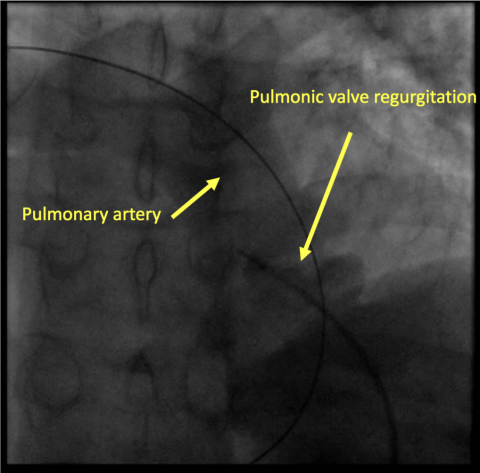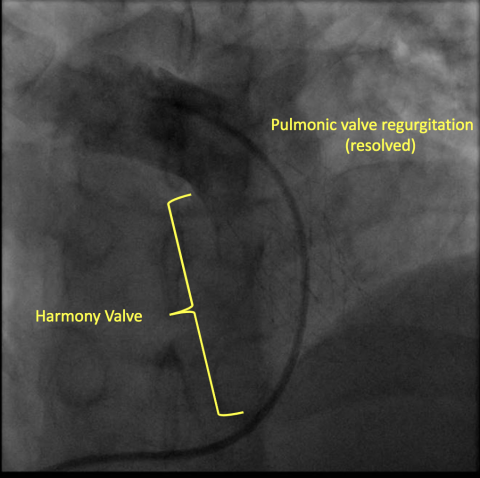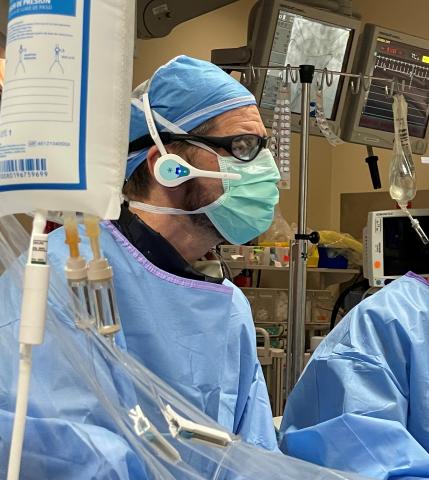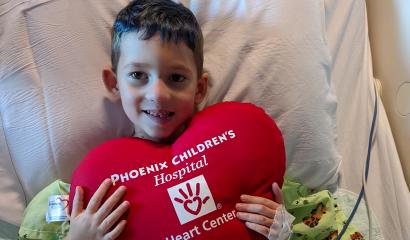Bright Futures
Articles and Updates from Phoenix Children's
The cardiology team at Phoenix Children’s has helped make our Heart Center the first program in Arizona to implant the Harmony Transcatheter Pulmonary Valve (TPV). This valve made history in March 2021 when it became the first transcatheter valve approved by the U.S. Food and Drug Administration to be used in patients with pulmonary valve regurgitation (leakiness).
Each year about 40,000 children are born with congenital heart defects, making heart disease the most common birth defect. In addition, about 1 in 5 children have abnormalities in the pulmonary valve or right ventricular (RV) outflow from their heart.
Before these TPVs were developed in the early 2000s, patients had to undergo open-heart surgery to replace heart valves. Now, many patients have a less invasive option by having a TPV delivered via a catheter that is threaded up through a vein and then inflated with a balloon. With this procedure, patients then avoid another heart surgery and can often go home the next day.
Harmony™ transcatheter valve delivery system
Before valve implantation
Post valve implantation
Based on several years of data, the Harmony valve has been shown to be safe and effective for use in patients with severe pulmonary valve regurgitation, especially in those with enlarged RV outflow tracts where the blood is pumped to the lungs.
The Harmony valve is particularly applicable to adult congenital heart disease (ACHD) patients because they have often had multiple prior heart surgeries and can have very enlarged RV outflow tracts that have developed over their lifetime of heart disease.
The data supporting the Harmony TPV were recently presented at this year’s International Society of Cardiac Angiography and Intervention Conference where researchers showed successful implantation in 67 patients with at least 1-year of follow-up.
These patients did very well with no or trivial pulmonic valve regurgitation one year after the Harmony TPV was implanted. The hope is that these patients should do well for at least 10 more years, or even longer, with this new technology. This valve can truly be a “game-changer” because now more patients can undergo implantation of this valve, which means these patients can defer or avoid heart surgery altogether.
Our team, led by Phoenix Children’s Heart Center interventional cardiologists, successfully placed the Harmony TPV in two patients, one 35 years old, the other 42 years old. These patients both had heart surgery in childhood and developed a regurgitant pulmonary valve over their lives. They have been cared for a Phoenix Children’s for many years and now they are seen in our ACHD Program which was recently accredited by the Adult Congenital Heart Association as a center of excellence. Our ACHD cardiologists determined their symptoms of decreased exercise tolerance, palpitations and leg swelling may have been due to their heart, particularly a leaky pulmonary valve, in both cases. Non-invasive imaging with cardiac magnetic resonance imaging (MRI) confirmed their diagnoses and they were both scheduled for the heart catheterization procedure on the same day. The catheterization and implantation of the Harmony TPV went extremely well, with members of interventional cardiology, echocardiography, cardiovascular anesthesiology and nursing all working together. Both patients were up and walking just a few hours after the procedure and they went home the next day – a true team effort!
The Phoenix Children’s Heart Center is proud to help Phoenix Children’s continue to innovate with technology, research and clinical care to improve the health and lives of families across the Southwest and beyond.







